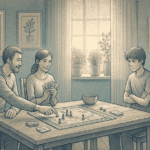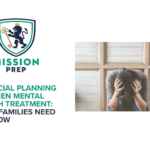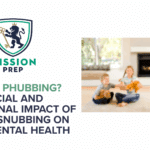Bed Rotting and Mental Health: Teen Passive Coping Strategies

“Bed rotting” is a viral practice popularized on social media platforms like TikTok, and it’s when teens permit themselves to be sedentary.
The idea around bed rotting is to distance yourself from the pressures of the daily grind. It’s normalizing lying in bed, reading, scrolling social media, playing a video game, or watching TV. In a nutshell, the bed rotting trend is about recontextualizing behaviors that are sometimes considered shameful. You aren’t being lazy. You’re taking care of yourself.
But is bed rotting bad for mental health? Or a life hack that can melt away stress? The answers to these questions depend on how the habit is applied.
In this article, we take a look at how social media promotes bed rotting and when it might become a cause for concern by exploring:
- What bed rotting means in teen culture
- The risks of bed rotting
- When professional help is needed for Bed Rotting
- Parenting tips for encouraging activity
- Where to find professional mental health support

Bed Rotting Meaning in Teen Culture
In 2024, bed rotting was officially defined as “The practice of spending many hours in bed during the day, often with snacks or an electric device, as a voluntary retreat from activity or stress.”1 After this, bed rotting was cemented into the teen lexicon.
It’s difficult to say exactly how popular bed rotting is. Surveys have indicated that as much as 60% of the population has taken time off work to bed rot.10 This might sound like a large number. However, would you have been surprised five years ago to learn that nearly two-thirds of the workforce has taken time off to catch up on rest?
It’s therefore clear that taking time in bed to rest during the day is nothing new. However, doing it in a very purposeful and socially validated way is.
Doctor Lawrence Chan, from Columbia University’s psychology department, says, “Rest is vital, but too much emphasis on passive rest can backfire.”2 This has been the most consistent medical response to the concept. However, Chan is also not completely opposed to the idea. He states that due to the culture of always needing to be productive, it’s important to find a socially acceptable way of taking time out to recharge.
So it’s not a bad thing to sit in bed now and then. However, it is important to think about why you are doing it. Self-care versus avoidance in adolescence can be a fine line. Are you attracted to bed rotting because it allows you to avoid a larger responsibility or mental health concern?
Or are you genuinely taking the occasional Saturday to recharge your batteries with a good book in bed? The answer to that question can make all the difference in determining if bed rotting is a healthy choice.
What Are the Risks of Bed Rotting?
Researchers have cited physical factors like blood clots, weight gain, and even decreased bone density as potential risks of a sedentary lifestyle.3 While these are valid concerns, they may also not be relevant to someone who takes a few days out of the month to stay in bed.
For most people, the risks of bed rotting concern mental and emotional health. There are two ways to look at how bed rotting can negatively influence a person’s well-being, including:
- What is motivating the choice to stay in bed?: If you’re exhausted from a busy week, spending time in bed can be a natural and healthy response. However, if you are sedentary because you feel anxious or depressed, bed rotting may be an avoidance behavior.
- How does bed rotting fit into your lifestyle?: Bed rotting as an occasional form of relaxation is OK. But using it as your primary method of self-care might be cause for greater concern. The same way it’s not good to always choose potato chips over apples as a snack, it’s not ideal to choose bed rotting as your primary mental recuperation behavior.
Motivation and moderation are important distinguishing factors. Sedentary activities can be healthy when they are applied thoughtfully and with balance to a more well-rounded mental health routine. However, if they’re used as a coping mechanism for mental distress, then they could risk worsening underlying issues.
The Mental Health Risks of Extreme Bed Rest: Is Bed Rotting Bad For Mental Health?
So, is bed rotting bad for mental health? Well, sometimes, yes; if bed rest is extreme, it can lead to mental health issues. Sedentary behaviors interfere with our brain’s ability to produce chemicals responsible for regulating emotional well-being: serotonin and dopamine.4
Habits like bed rotting are also typically asocial, which can further negatively impact mental health. This effect comes down to how socializing offers subjective benefits, such as an increased feeling of belonging and enhanced self-esteem.
Social interactions also benefit brain chemistry, stimulating the production of oxytocin, serotonin, dopamine, and endorphins. Each of these chemicals is responsible for reducing stress and regulating a person’s mood.5 In fact, studies have even found that the chemicals created by regular social encounters can boost a person’s immune system.6
A study conducted by the National Institute of Health in 2018 indicates that reducing sedentary time by even just sixty minutes a day can have a significant impact on long-term mental health results.7 This impact may not only come down to how being sedentary is bad for emotional well-being, but also how it prevents people from pursuing more productive activities.
There is a nuanced connection between bed rotting and depression. As indicated above, significant periods of rest can have a depressive impact on a person’s brain chemistry.
However, extended periods in bed can also indicate that a person is already suffering from depression. Melatonin production increases during depressive cycles, making the victim feel more lethargic.
Spending lots of time in bed is also an avoidance behavior. People suffering from depression use it in an attempt to escape the pressures of everyday life.
When bed rotting behavior is brought on by pre-existing depression, a more nuanced, professional response may be needed.
Assessing When Clinical Help is Needed
If your teen is bed rotting alongside indicators of depression or anxiety, professional support is often a good step to ensure they get the help they need. Mental health conditions can – and frequently do – worsen without treatment.
Signs of a potential underlying mental health issue in bed rotting can include:
- Irritability
- Anti-social behaviors
- A sudden disinterest in hobbies, sports, friends, and so on
- Seeming hopeless
- Emotional outbursts, such as anger or tearfulness
- Changes to appearance, such as personal hygiene or weight
Therapy for low motivation in teens may be appropriate in cases where sedentary behaviors are overly frequent or constant. For instance, cognitive behavioral therapy (CBT) for inactivity and low-energy teens is an often effective outpatient approach to curbing sedentary behaviors.
There are also inpatient programs for teen depression and staying in bed, as complete withdrawal may indicate severe depression. However, in situations where the symptoms of depression are not apparent, there are simpler habits you can implement to encourage activity.
Emotional health recovery strategies for teens ideally prioritize activities they can engage with enthusiastically. The following section covers some strategies that parents can use to encourage more activity.
Parenting Tips for Encouraging Activity
If you are concerned about your teenager’s sedentary habits, it’s helpful to first understand why they are attracted to bed rotting behaviors.
Our brains produce chemical reactions to external stimulation. Screen time triggers a dopamine reaction in the brain, creating pleasure. But as neurological pathways become desensitized to dopamine, the brain requires more and more stimulation to feel normal. In other words, bed rotters who get used to hours of scrolling may be chemically dependent on the behavior.
As a parent, you may want to look for healthier ways to activate the reward centers in your child’s mind.
Hiking, exercise, and meditation all release dopamine, but in more natural contexts. They also release endorphins and serotonin that can help with mood stabilization and longer-term satisfaction.
To encourage activity:
- Start Slow: Choose easily adopted behaviors like family walks after dinner or screen-free meal times as ways to gradually stack healthier habits. Starting slow could be less of a shock to your child’s brain chemistry, and it can help you figure out what works best for your family.
- Participate: Your child might not respond well to screen time restrictions or activity requirements that you aren’t following yourself. Modeling healthier relationships with “downtime” sets a good precedent for them to follow.
- Make activity part of their regular routine: Start putting healthy behaviors on your calendar. Hikes. Yoga. Local library events. Structure is particularly helpful in the early stages of developing new habits.
In regard to the final tip, you don’t need to schedule every moment of your teenager’s life. Just a few high-quality activities a week can reduce screen time organically while naturally activating the reward centers in their brains.

Mission Prep: Professional Support for a Teen’s Mental Health
If you’re concerned that anxiety or depression are behind your child’s sedentary behaviors, it may be time to seek help.
At Mission Prep, we specialize in compassionate, comprehensive mental health care. Our treatment programs include both inpatient and outpatient options, each designed to reflect the fact that every teenager’s experience is nuanced and unique. Contact us today for more information on our care options.
References
- Dictionary.com. (n.d.). Bed rotting. In Dictionary.com. https://www.dictionary.com/browse/bed%20rotting
- Brenner, B. (2025). Bed rotting: Trend or trouble? Understanding the viral self‐care craze and its impact on mental health. Therapy Group of DC. https://therapygroupdc.com/therapist-dc-blog/bed-rotting-trend-or-trouble-understanding-the-viral-self%E2%80%91care-craze-and-its-impact-on-mental-health/
- Serrano, J. F. (2024, August 2). Is bed rotting bad for you? TIME. https://time.com/7006944/is-bed-rotting-bad-for-you/
- Park, J. H., Moon, J. H., Kim, H. J., Kong, M. H., & Oh, Y. H. (2020). Sedentary lifestyle: Overview of updated evidence of potential health risks. Korean Journal of Family Medicine, 41(6), 365–373. https://doi.org/10.4082/kjfm.20.0165
- Marques, A., Marconcin, P., Werneck, A. O., Ferrari, G., Gouveia, É. R., Kliegel, M., Peralta, M., & Ihle, A. (2021). Bidirectional association between physical activity and dopamine across adulthood—A systematic review. Brain Sciences, 11(7), 829. https://doi.org/10.3390/brainsci11070829
- Umberson, D., & Montez, J. K. (2010). Social relationships and health: A flashpoint for health policy. Journal of Health and Social Behavior, 51(1_suppl), S54–S66. https://doi.org/10.1177/0022146510383501
- Leschak, C. J., & Eisenberger, N. I. (2019). Two distinct immune pathways linking social relationships with health: Inflammatory and antiviral processes. Psychosomatic Medicine, 81(8), 711–719. https://doi.org/10.1097/psy.0000000000000685
- Ellingson, L. D., Meyer, J. D., Shook, R. P., Dixon, P. M., Hand, G. A., Wirth, M. D., Paluch, A. E., Burgess, S., Hebert, J. R., & Blair, S. N. (2018). Changes in sedentary time are associated with changes in mental wellbeing over 1 year in young adults. Preventive Medicine Reports, 11, 274–281. https://doi.org/10.1016/j.pmedr.2018.07.013
- Ryan, R. M., & Deci, E. L. (2001). On happiness and human potentials: A review of research on hedonic and eudaimonic well-being. Annual Review of Psychology, 52(1), 141–166. https://doi.org/10.1146/annurev.psych.52.1.141
- Mayer, A. (2025, August 4). The rise of bed rotting: How and why Americans are doing it. Amerisleep Blog. https://amerisleep.com/blog/bed-rotting-survey/



















